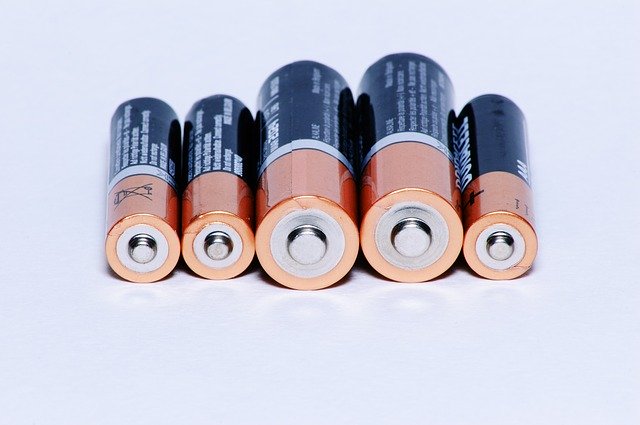There was a recent major development that many investors have almost completely ignored: the U.S. government is getting into the domestic mining and battery industries.
As part of the Inflation Reduction Act (IRA), the Department of Energy handed several companies big lumps of cash in mid-October, ranging from $50 million to $316 million, adding up to almost $3 billion in total investment.
Today, let’s look at the firm that will benefit the most…

Building a U.S. Battery Supply Chain
The Inflation Reduction Act introduces strict rules about the sourcing of raw materials used in manufacturing electric vehicles (EVs) and their batteries. This is the government is making a push to build up the local supply chain. The aforementioned grants all went to companies building or planning battery metals processing facilities.
The goal of the restrictions is twofold: first, to boost the domestic automakers that are moving at top speed into electric vehicles. Second, to develop a local supply chain for electric car batteries.
The European Automobile Manufacturers’ Association (ACEA) understands this perfectly, having noted in a September statement: “The new rules have restricted the eligibility for tax incentives to a relatively small number of vehicles assembled in North America in the short term and, in the medium term, may disqualify any vehicle at all from obtaining such a benefit due to very high local-content rules for batteries.”
Benchmark Mineral Intelligence is a specialist information provider for the EV battery industry. It has raised its forecast for the North American EV battery industry, thanks to the IRA legislation. Benchmark forecasts that North America will now produce 12.3% of the global output of batteries by mid-decade, up from the prior forecast of 8.2%.
Lithium
The key component for the current generation of EV batteries is lithium.
Lithium and many of the other raw materials that are used for electric batteries, such as graphite, require significant processing to get to the high-purity forms that go into the final product. China’s existing expertise and production capacity mean it will comfortably remain the top dog for years to come.
As the electric vehicle market grows, other countries will need to increase their self-reliance due to the race for raw materials and the potential for geopolitics leading to export and import routes being closed off. That’s why the IRA legislation was so important.
And make no mistake: a lot of lithium will be needed if the EV industry is to really take off.
Benchmark Minerals says that by 2040, the industry will need to produce more lithium in a month than was mined in all of 2021!
That number could make one conclude that, between soaring demand and the cash being thrown around by the U.S. government, any company with lithium exposure is worth investing in. However, I am taking a more nuanced approach.
Albermarle
I prefer to invest in a major lithium producer that is a member of the S&P 500—Albermarle (ALB).
The company is a global manufacturer of highly engineered specialty chemicals for a wide range of markets. It became the world’s largest lithium producer through its January 2015 acquisition of Rockwood Holdings. Its other leading products are bromine (second biggest global producer)—which is used in fire safety solutions—and the catalysts used in oil refining.
Lithium, though, generates the majority of total profits. Albermarle produces the metal through its own salt brine assets in Chile and the United States, as well as two joint venture interests in Australian mines: Talison and Wodgina.
Albermarle’s Chilean operation is among the world’s lowest-cost sources of lithium. And the Australian Talison site, in which the company has a 49% interest, is one of the best spodumene resources in the world. This allows Albemarle to be one of the lowest-cost lithium hydroxide producers, as spodumene (lithium hard rock concentrate) can be converted directly into lithium hydroxide.
The company plans to expand its lithium production from 88,000 metric tons in 2021 to nearly 500,000 metric tons over the next decade. This includes the company’s 60% interest in the Wodgina spodumene operation (Australia’s Mineral Resources (MALRY) retains the other 40% interest). The joint venture will begin producing spodumene and have a 50,000-metric-ton lithium hydroxide plant in Australia.
Albermarle got a nice $150 million grant from the U.S. Department of Energy as part of the first set of projects funded by the IRA legislation. The grant funding is intended to support a portion of the anticipated cost to construct a new, commercial-scale, U.S.-based lithium concentrator facility at Albemarle’s Kings Mountain, North Carolina site.
Albemarle expects the concentrator facility will supply up to 350,000 metric tons per year of spodumene concentrate to the company’s previously announced mega-flex lithium conversion facility. The mega-flex conversion facility is expected to eventually produce up to 100,000 metric tons of battery-grade lithium per year, to support domestic manufacturing of up to 1.6 million EVs per year.
Buy Albermarle
I believe that the lithium market will remain undersupplied throughout the rest of the decade, supporting prices well above the marginal cost of production.
This is important because Albemarle has wised up on to how to price its lithium. Management’s former lithium pricing strategy hurt shareholder value in the past, by limiting the company’s upside and not preventing downside when prices fell.
Earlier this year, however, management finally changed its approach to pricing, announcing a new three-tier pricing system. Under this system, 15% of battery quality lithium is sold at short-term prices based on the market price, and 65% is sold at index-referenced prices, some of which have a set cap and floor, but fluctuate based on market prices. Albermarle sells the remaining 20% at fixed prices that reset every six to 12 months.
For long-term investors looking to invest in the lithium industry, Albemarle, which owns two of the best resources in the world, is a great choice. The stock is a buy anywhere around the $300 per share level.





